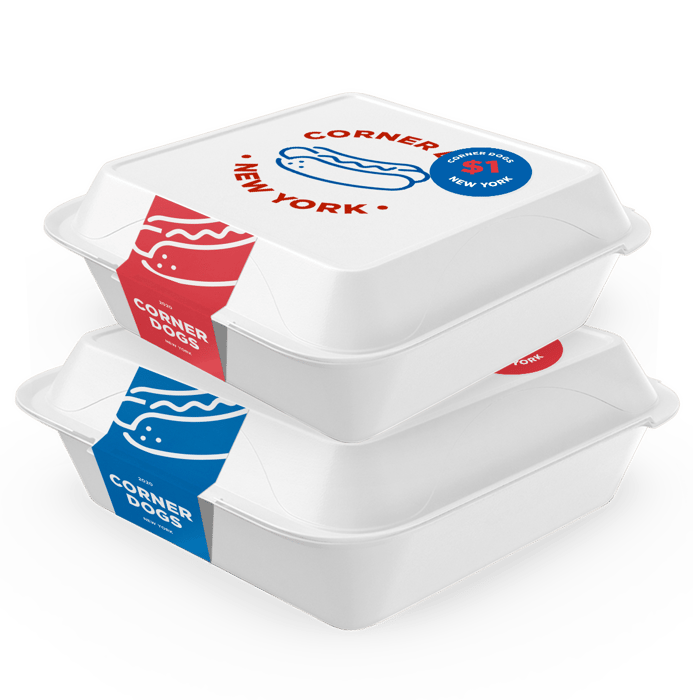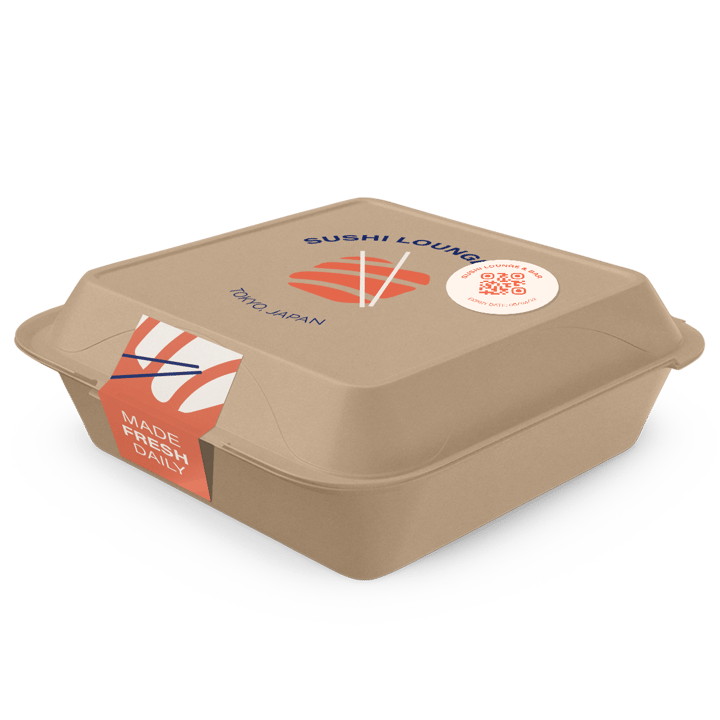
What is the Environmental Impact of Takeaway Food Containers?
Plastic and styrofoam takeaway food containers are a big contributor to landfill waste. Here are some sustainable packaging options for your food brand to consider.
By noissue — 29 June, 2022
One of the most notable consequences of the Covid-19 pandemic has been the increased reliance on food couriers and contactless services as restaurants across the country diversified their services to provide ready-made options to customers.
The food delivery industry has skyrocketed in value as more people become accustomed to ordering food through Skip The Dishes, Uber Eats, or directly from restaurants. With the increase in ordering takeout comes an increase in stockpiling takeaway food containers, and that’s a problem.
The issue of food packaging is longstanding, with increased calls for improved packaging standards given the excess use of plastic, styrofoam, and other packaging materials that leave waste and negatively affect the environment.
The issue is not with customers but with the brands themselves, who rely too much on such materials to preserve the quality of the food they deliver to their customers. The environmental impact of takeaway containers is more than what meets the eye and has long needed a transformation.
Takeaway Containers Account For a Considerable Amount of Waste

Takeaway boxes and containers make up a considerable part of municipal solid waste, with nearly 30% of the total generation as recently as 2018. Additionally, nearly one-third of greenhouse gas emissions come from takeaway food containers.
The food takeaway industry has long been guilty of unsustainable practices with food packaging, still using outdated practices when serving food to their customers.
The biggest issue with food packaging is that the brands selling food typically offer or include items people don’t use. Whether wrapping food in foil, offering paper packets or plastic utensils, or putting the takeaway food containers in plastic bags, food packaging involves a lot of products that customers will instantly want to dispose of post-delivery.
Plastic and styrofoam takeaway containers are destructive to the environment, causing landfills with their inherent chemicals, including petroleum and natural gas.
Today’s food comes in aluminium and cardboard manufacturing, which can also be environmentally problematic. There are various sustainable alternatives for takeaway food containers that brand leaders like you should consider to save the environment and enhance your brand’s reputation.
Takeaway Boxes and Containers Impact Wildlife, Cause Water and Land Pollution

The use of plastic, styrofoam, cardboard, and other types of takeaway food containers has a significant impact on wildlife. Statistics show that plastic waste, including waste from plastic food containers, has negatively impacted over 700 marine species, including seals, sea turtles, and fish.
There are billions of pounds of plastic in the ocean already. With takeout becoming more prominent in the new normal, that figure will grow even more alarming.
A lot of food packaging is buried in landfills or carried along by water and wind into the environment. Much of the packaging that’s sent to landfills isn’t degradable or doesn’t degrade quickly. As a result, the chemicals from the takeaway boxes and containers, including any ink from the packaging labels, latch onto soil and water.
Additionally, the pile-up of food packaging waste from the disposed of takeaway containers leads to increased littering, causing land pollution that can threaten marine and human life because of the chemical build-up. Brands must explore more sustainable food packaging to prevent these issues from happening.
Can I Recycle Plastic Takeaway Containers?
You might be asking yourself with the endless plastic containers at your disposal, ‘Can I Recycle Plastic Takeaway Containers?’ It can, but at a cost. Many regular plastics are mechanically recycled, meaning they are sorted, cleaned, and later reused or remolded, degrading their tensile strength and quality. Plus, doing so is expensive and uses up countless resources.
The production of plastic materials for food packaging and other packaging means causes a considerable number of greenhouse gas emissions, with other air emissions from plastic materials like nitrous oxides and hydrofluorocarbons. Using paper during container manufacturing, meanwhile, leads to air and water pollution, as well as large volumes of toxic wastewater.
Recycling regular plastic containers, while possible, isn’t a viable solution and requires a lot of energy to do successfully. Even when done, they can be just as harmful as the original materials, causing more problems for the environment.
Opting for eco-friendly takeaway food containers made from renewable materials that break down easily saves you time and money with your food packaging solution.
Eco-Friendly Takeaway Food Containers are the Solution

Using eco-friendly takeaway food containers can easily solve the waste problem and render the need to include any wasteful extras obsolete. Custom Clamshell Containers, for example, are made with sugarcane fiber, with the boxes being commercially compostable and free from petroleum or trees.
With eco-friendly containers, the production practices are more affordable and less exhaustive, with an increased focus on using plant-based materials, including soy or water-based inks and petroleum-free boxes. Sustainable food containers are ideal for preserving hot and cold foods when customers order takeout. They are fully commercially compostable, making them easy to get rid of and can be used again without degrading the quality.
Additionally, eco-friendly containers show a brand's social responsibility and awareness, looking out for the best interest of customers and their surroundings. Both customers and employees highly value brands when they prioritize social responsibility. If you haven’t been using sustainable food packaging for your brand, now would be a good time to do it and increase your brand’s value.
Wrapping It Up
Choosing sustainable food packaging helps your brand image and fully preserves the quality of the food you deliver to your customers. Make a positive impact on your food packaging waste and browse noissue's custom, eco-friendly food packaging options for your brand today!